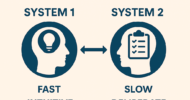Physicians used to take care of patients at their homes.
Through the 1960s, patients would make a phone call and the doctor would arrive at the doorstep, black bag in hand, eager to serve. This changed in the mid to late-1960s as doctors developed group practices and as medical care expanded to include technology-based studies and specialty referrals, and thus became more hospital-centered. Prior to World War II, 40 percent of patient encounters were in the home. By the mid-sixties, only 4 to 9 percent of patient encounters were house calls.
In this new hospital-based environment, patients turned to the emergency room for reliable and immediate medical service. On nights and weekends when their physicians were less accessible, they flooded nearby emergency rooms and expected to receive the quick, individualized service that they had previously received in their own homes. No such luck: as emergency room visits soared, hospitals struggled to find solutions to deal with volume overload, increasing patient dissatisfaction, and poor outcomes. One of the short-term solutions was to divert non-urgent patients to ambulatory clinics; the other, which occurred early on at community hospitals but much later at academic hospitals, was to staff the ER with adequately trained “emergency physicians” to improve patient flow and provide adequate resident supervision.
In recent article by Paula Span, No Place Like Home, she discusses recent revival of the physician house call. A small but growing group of physicians who provide house calls emerged nearly a decade ago, when Medicare raised reimbursement rates for home visits. In the present day, reimbursement rates range from $100 to $200 (averaging at about $110), depending on the complexity of the visit. Despite this new movement to revive the house call, house calls still only account for under 1 percent of all patient visits. (Refer to Washington Hospital Center’s Medical House Call Program, featured in the CNN article Black bag and Blackberry in hand, this doc makes house calls, for an example of a well-established program which provides home visits on a regular basis.)
I went on house calls as a medical student while working with a small-town internal medicine physician. No doubt there are benefits – the opportunity to take care of patients in their own home and to get a sense of their living environment, their support system, and their overall safety provides insight which cannot be gleaned from office or hospital visits.
But the nature of the visits has changed dramatically since the 1960s. A 2006 article in TIME, A Doctor in the House, discusses the ever-expanding contents of the modern-day “black bag,” which can include everything from a Blackberry to an EKG machine to portable lab kits and IV medications, and the list goes on. Maybe someday physicians will add the newest physician gadget, GE’s Vscan, to their white coat pockets.
Another problem which has not been addressed is how to structure house call programs on a large-scale basis so that they will work for physicians and patients alike. Patients who rely on physicians to come to their homes might be less likely to go to office visits if and when the need arises. From the physician’s perspective, the logistics of scheduling home visits while simultaneously running busy private practice can be challenging. Medicare reimbursement does not account for the travel expenses, in time and money, which physicians need to consider in order to maintain reasonable hours and financial stability.
The house call offers many benefits to patients and physicians; it has the potential to cut costs by eliminating unnecessary ER visits, and it has the potential to help re-establish a more intimate doctor-patient relationship. With the emergence of boutique medicine, it may quickly become the primary method of care among the more affluent members of society. However, regardless of house calls, the uninsured and the homeless will continue to flood emergency rooms, and we will not see much improvement until we establish a more effective way to deliver primary and preventive care to those who need it the most.
This anonymous medical resident blogs at A Medical Resident’s Journey.
Submit a guest post and be heard.



















![Surviving kidney disease and reforming patient care [PODCAST]](https://kevinmd.com/wp-content/uploads/Design-2-190x100.jpg)

![Antimicrobial resistance: a public health crisis that needs your voice [PODCAST]](https://kevinmd.com/wp-content/uploads/Design-1-190x100.jpg)
